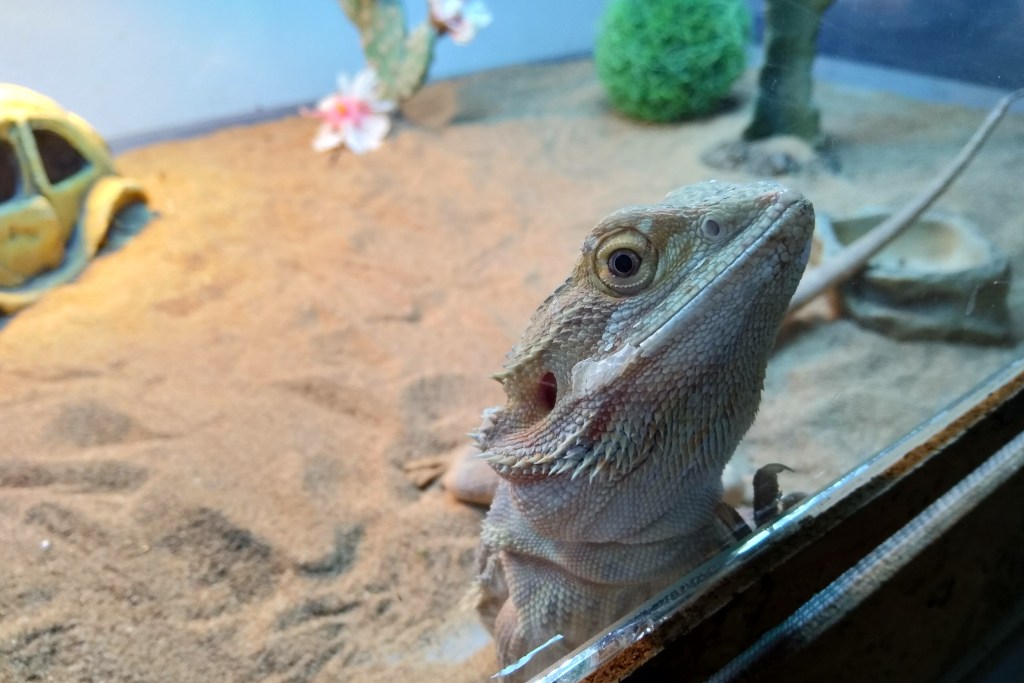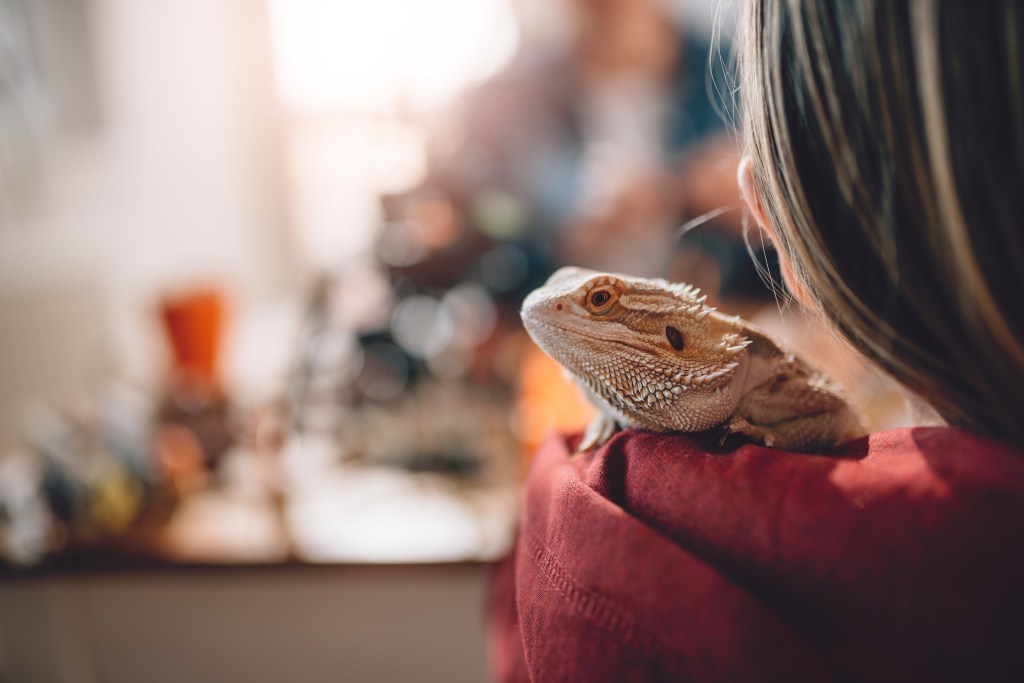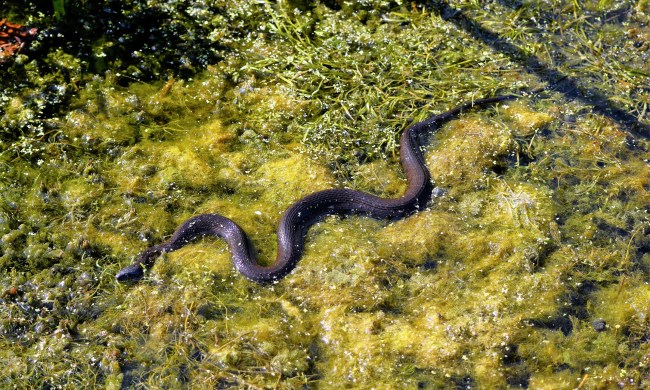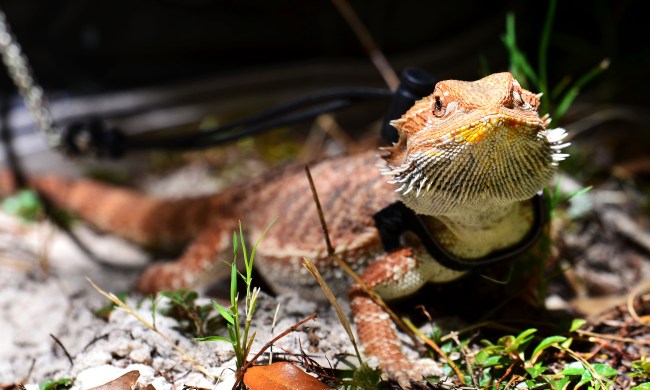When making an emergency plan, you should include evacuating your pets as part of it. Knowing who will grab the animals and the quickest and safest methods for transporting them saves crucial minutes. While it might be simple to pick up the cat and leash the dog, reptiles and amphibians require a bit more preparation. By making a fully detailed master plan of escape, you will drastically increase your chances of all household members making it out safe and sound. Having the best system in place will involve a number of accessories. Get everything and have it ready long before you ever need it. (We hope you never do!)

What do bearded dragons need in case of emergency?
Your bearded dragon setup likely consists of a 50 or so gallon tank, thermometer, hygrometer, substrate, branches, and lamps. There’s no way you’ll be able to take all of this with you in the 30 seconds to a minute you have to collect yourself once the alarm goes off. That means you need a separate system specifically for these circumstances instead of trying to take pieces of your standard housing. Additionally, you should have a way to bring along a small number of necessities like travel food and water dishes in case you can no longer return to your home.
How can I transport my beardie safely?
The biggest and most urgent need will be getting him out of there, stat. In some emergency situations, like a fire, you need to take him out of the immediate area to safety, but you should have access to additional resources. Hurricanes, earthquakes, and tornadoes present different challenges as they may result in loss of power, water, or the ability to buy more equipment. We recommend having a little go bag for transporting bearded dragons that also includes basic necessities, and keeping it somewhere that you can grab it at a moment’s notice. Here’s what you’ll need ready and waiting.

Carrying case
Some owners choose to have a travel case or even use a breeding tank that will be easy to take. Especially if you aren’t sure when you will be able to return, this is a good option since you’ll need to stage him somewhere else for a few hours at least. Of course, this won’t work long term but is suitable for a car ride.
Reptile sling
If you don’t have the use of your hands to escape or need to keep him close to your body for heat, consider wearing him in a sling. This will work well to walk with him especially once you’ve left the immediate area.
Harness
Consider having a leash and harness as well that you can put on him so he doesn’t escape. Even if you’ve never seen him make a break for it, the hectic and scary emergency situation could cause him to behave differently.
Heating packs
Have a few non-electric heating packs that stay in your go bag — the kind that you use as hand warmers will work just fine. Depending on the type of emergency, the car may also wind up serving as a heating system while you wait for more permanent accommodations.
First aid
Lastly, you might decide to include first aid supplies such as styptic powder and antibacterial wipes. Cloths for medical needs or for wiping up waste will go a long way toward both of your comforts as well.
We hope you never wind up in an emergency, but if the time ever does come, you want to be ready. Once you’ve gotten your supplies, keep them all together in an easy-to-access spot for quick removal. If you go the travel case route, you can put the basics in there so you only have to grab one thing. Determine which human household members will take on which pets if you have multiple lizards or other animals in the home. Lastly, as silly as it sounds, you should practice occasionally. Make sure you can get your beardie into travel position with all accessories in tow in less than a few minutes. If it takes a few tries, that’s fine! You only need to get it quick enough to feel fully prepared in case the worst should happen.



